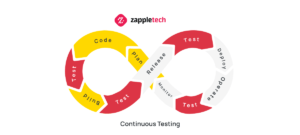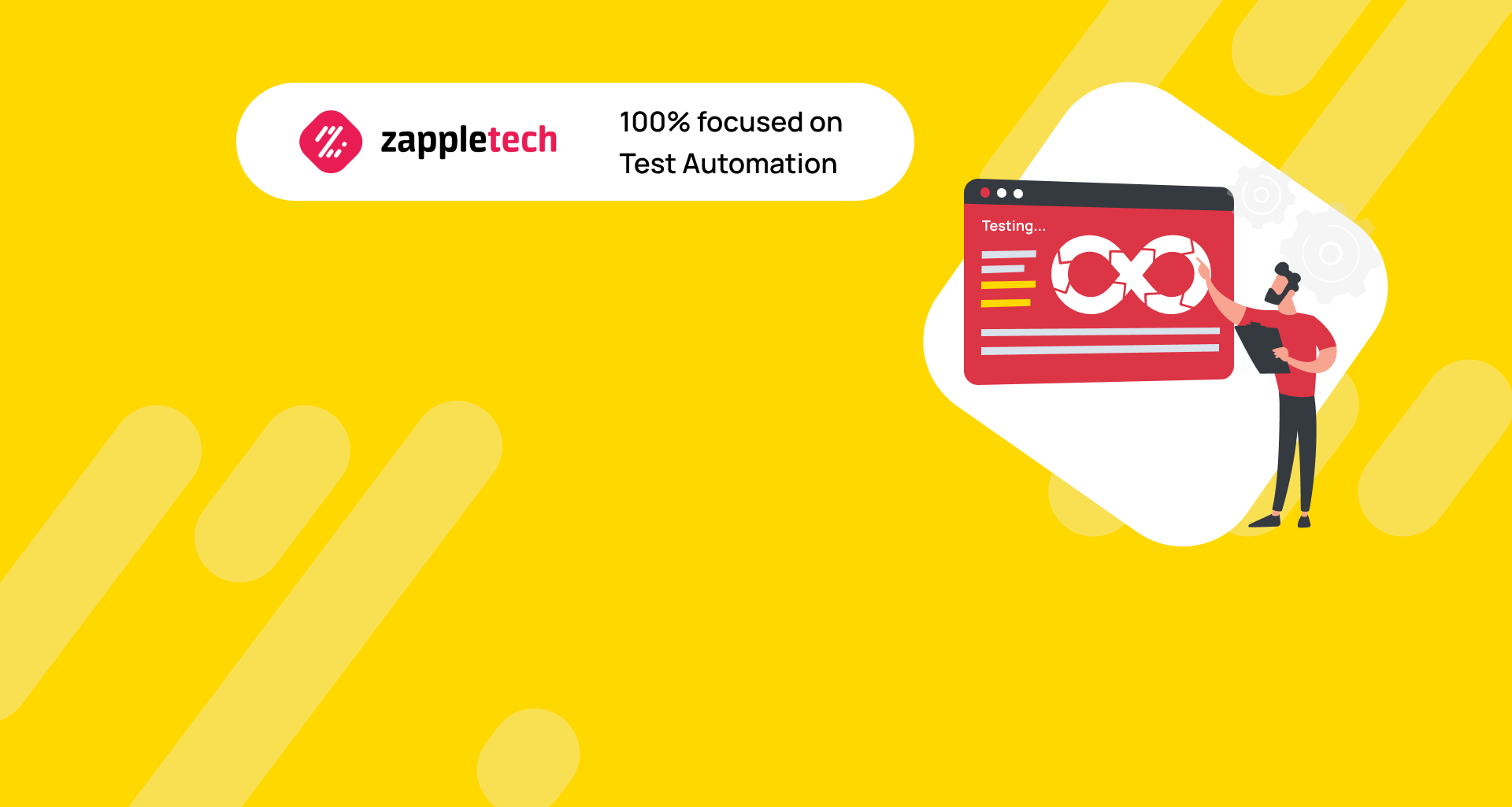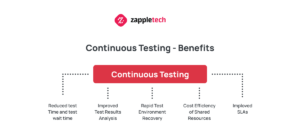Table of Contents
Introduction
Organizations are increasingly adopting continuous integration (CI) and continuous delivery (CD) as part of their software development lifecycle to ensure faster time to market and maintain a competitive edge. These modern development practices allow for rapid and iterative releases, but they also require robust testing strategies to maintain software quality. This is where continuous testing comes into play as an essential component of the CI/CD pipeline.
Continuous testing integrates automated testing throughout the development process, providing immediate feedback on the quality of the code at every stage. This approach minimizes the risk of defects reaching production by identifying issues early in the development cycle, ultimately reducing the need for expensive and time-consuming testing phases that were traditionally performed towards the end of the project. By implementing continuous testing, organizations can achieve a seamless flow from development to deployment, significantly enhancing their overall efficiency and reducing time to market.
Integrate testing into every stage of the development pipeline. Automating tests from the start, including unit, integration, and end-to-end tests, helps catch issues early and ensures faster feedback for developers.Mykhailo PoliarushCEO, ZappleTech Inc.
Automated continuous testing further strengthens this process by leveraging automated test scripts and tools, allowing teams to execute tests more frequently and consistently without manual intervention. This not only speeds up the testing process but also ensures that the software meets quality standards at every checkpoint. Organizations embracing automated continuous testing are better positioned to detect and address bugs earlier, thereby maintaining high-quality software output even with rapid iterations.
To successfully implement continuous testing in your project, it’s crucial to understand its benefits and core principles. Continuous testing offers advantages such as improved code quality, faster release cycles, and reduced costs associated with defect management. By embedding automated continuous testing within your CI/CD pipelines, your team can streamline the testing process, enhance collaboration, and ultimately deliver more reliable software to end-users.
What is continuous testing?
Continuous testing is a comprehensive approach that integrates testing throughout the entire software development lifecycle, rather than conducting tests at isolated stages. This model extends beyond traditional testing practices by embedding testing into all phases, including development, integration, pre-release, and production. The goal is to provide continuous feedback on the quality of the software, allowing for immediate identification and resolution of issues.
By implementing continuous testing, teams can ensure that defects are identified and addressed at the earliest possible stage, significantly reducing the time and cost associated with fixing bugs later in the development process. This approach not only enhances the quality of the product but also accelerates the delivery timeline, supporting a more agile and responsive development cycle.
A key aspect of continuous testing is the use of automated continuous testing tools, which streamline the testing process and enable frequent, reliable test execution without manual intervention. Automated continuous testing ensures that the code is consistently validated against predefined criteria, making it easier to detect integration issues and regressions early on.
Overall, continuous testing fosters a culture of quality and accountability within development teams, encouraging frequent testing and early feedback. This approach aligns well with DevOps practices, as it supports continuous integration and continuous delivery (CI/CD) pipelines, ultimately driving faster releases and higher customer satisfaction.
How does continuous testing work?
The traditional testing method has a clear division into the Development and QA phases. Once development is finished, the software goes to the QA engineers that run the tests and find the bugs for the development team to fix.
Under these conditions, the team constantly faces a lack of time for testing. The business wants to deliver the product to the end-user as quickly as possible, without losing the quality. That is how continuous testing appeared. Now testing is handled throughout the entire development process. Let’s see, how the continuous testing pipeline is organized.

1. Plan
The Plan stage of continuous testing is all about making sure that your product roadmap is in line with what you need. Make sure that all requirements are gathered and that you have a development plan for your product. This will help to ensure that you meet all of your deadlines in the long run.
When creating a product roadmap, it is important to break the requirements down into Epics, Features and User Stories. This will allow the customer to have a clear understanding of the product. The product backlog will then be broken into tasks, which will be used to plan sprints and allocate tasks to the team.
2. Code
Once the plan is created, the developers can get to the implementation of the product.
Developers make changes constantly, and with continuous testing, the team can detect problems earlier. Developers make changes and use different continuous testing tools to maintain the code quality and avoid bugs and security issues
3. Build
Once a developer has finished a task, they commit the code to the shared repository by sending a pull request for merging the new code with the existing database. Another developer reviews the new code and if there are no issues, the request is approved.
When a pull request is submitted, the build process starts by performing unit, integration and end-to-end tests. If the build fails or any of the tests fail, the build will fail, and the developer is notified to resolve the issue. If the build succeeds, the branch is merged and the next step is testing the build on a production environment.
4. Test
When a build succeeds, the next step is to deploy the build to a staging environment. This is where the build can be tested and verified for deployment. The staging environment is often a new, or an existing hosting service.
At this stage, automated tests run security scanning of the app, check the app infrastructure and performance, run load testing etc.
5. Release
The Release phase is the final stage of a DevOps pipeline. It’s the point at which the build is finally ready for deployment into the production environment.
Depending on the DevOps maturity of an organization, they may choose to automatically deploy any build that makes it to this stage of the pipeline.
6. Deploy
Deployment is the process of moving software from development to production, which includes making the software available in production. This process is typically automated, and can be as simple as copying files from one directory to the other.
The most common way of deploying is through a code push. The code push sends the new code to the server and the server then automatically deploys it to the production environment.
7. Operate
One of the first things that an operations team should consider is how they will scale their services in the event of a sudden load. Since the load may be unexpected, they need to be prepared to handle it.
Scaling can be done by adding more servers or increasing the number of servers by adding another physical server to the infrastructure.
8. Monitor
In the last stage of the DevOps cycle, you’ll have collected all the data that you need in order to monitor your environment. This will include any information from the previous phases, as well as any data that your monitoring system gathers, as well as information from external sources.
Once you’ve got all of this information, you’ll be able to monitor your environment, providing you with the information that you need to make all the required changes to your architecture.
Benefits of continuous testing
Accelerates release cycles
Automated Testing allows fast and accurate delivery of software updates. Continuous Testing helps to provide a level of quality assurance before the application is released. These tools help companies speed up their release cycles, reduce errors and deliver software on time.
Continuous Testing helps companies to reduce the amount of time it takes to develop and test software, and has the ability to eliminate manual testing.
Early feedback to stakeholders
If a stakeholder is waiting for a product to be released into production, and it appears to be suffering from defects, the development team can deploy a continuous test to the production environment. This provides frequent actionable feedback at each development stage, and helps to expedite the release into production.
CT allows the development team to test and deploy their code in the production environment in a seamless way, and helps to provide early feedback to the stakeholders.
Improves test coverage
Continuous testing has been proven to increase test coverage, improve development velocity, and shorten the time to market. With proper implementation of CT, testers and developers are assured that all critical errors in the application are identified very early – before integration.
Reduces cost of defects
The cost of resolving defects is drastically reduced when the cycle of development is continuous. With continuous testing, you can quickly identify and resolve errors in the development lifecycle. This is because continuous testing adds a layer of quality assurance to the development lifecycle.
It helps identify defects early on and to resolve them quickly. The earlier the bug is identified and fixed, the faster the development lifecycle is, and the less money is spent in the long run.
Easy to implement
Continuous testing can be implemented with a simple integration with an existing CI/CD pipeline. The testing should be run against a test environment, which can be created by installing virtual machines on a shared cloud infrastructure. It doesn’t require you to have any new tools, and it can be easily integrated with existing CI/CD pipelines.
Involve testing activities as early as possible in the software development lifecycle. Collaborate with developers and stakeholders during the requirements and design phases to identify potential defects early, reducing costs and improving quality.Mikhail BodnarchukCDO, ZappleTech Inc.
Core continuous integration principles
The practice of continuous testing has been gaining traction in recent years and has been adopted by many organizations. It is not a new approach to designing, building, and testing systems. It is a novel approach that has been adopted by many organizations.
Now we will discuss what the core continuous test automation principles are, and how and why they should be applied in order to remove perennial barriers to its adoption.
Shift left, shift right
The mindset of a tester is an important factor in their success. Until the tester can shift left, they will not be able to build quality into their testable systems. Testers must act as critical modelers, working from day one to build quality into testable systems.
This not only avoids the higher remediation costs associated with detecting bugs late but can enable a greater degree of subsequent automation as QA moves “right” through the delivery cycle.
Parallelism
In order to increase test coverage, it is important to have parallelism. In order to increase test coverage, one must have a testing team working simultaneously with one another, as well as with developers and business analysts. This is because it is difficult to test everything at once, and the more people working on the project the better chance there is that there will be no miss-communication about the testing.
“Don’t repeat yourself”
In order to further test the product, there must be an emphasis on re-usability. This is required in order to ensure that the effort of previous iterations is seamlessly leveraged in future sprints. If QA is required to focus only on newly developed or updated functionality, this becomes challenging as it is difficult to keep up with the new information. This can be achieved, but it requires a lot of time and effort. To avoid this, QA should be able to focus on older code as well.
Complete automation
To take advantage of continuous testing, your organization should adopt a near zero touch approach. This means that your testing environment should be constantly tested and updated to the latest versions of your software, your automated test scripts should be run continuously, and your test data should be readily available.
Continuous feedback
The process of continuous testing is more than just running tests. It’s about gathering feedback on the quality of the software throughout the entire process of product delivery. This includes gathering and applying feedback from the product owner, testers and the business. To do this effectively, the product owner and the QA team need to work closely together.
The QA team need to be able to make changes to their testing approach and to the process, based on the feedback they receive. QA must then be able to brief the product owner and the business on what they are doing and why. This ensures that the product owner or business is not left guessing as to why a change was made.
Conclusion
We hope you enjoyed our blog post about continuous testing and its core principles. Continuous testing is one of the most important practices you can use to improve your development process, ensuring that every change made to the codebase is immediately validated. By integrating automated continuous testing into your workflow, you create a seamless environment where tests run automatically, providing immediate feedback to developers and helping to catch issues early in the development cycle. This approach not only speeds up the development process but also significantly improves software quality and reduces the time spent on manual testing.
Automated continuous testing empowers teams to detect defects faster, maintain a consistent testing cadence, and respond to changes more swiftly. It integrates testing into every phase of the software delivery pipeline, from development to production, thereby supporting a more agile and efficient workflow. By embracing these core principles of continuous testing, your team can foster a culture of quality and collaboration, leading to better outcomes and a competitive edge in the market.
The adoption of continuous testing and automated continuous testing isn’t just a technical enhancement; it’s a strategic move that aligns with modern DevOps and Agile methodologies, promoting a more reliable and scalable approach to software development. Implementing these practices will ensure that your development process is optimized for both speed and quality, enabling you to deliver robust and reliable software with confidence.
Remember, the journey to fully adopting continuous testing can be gradual, and it’s important to continuously evaluate and refine your approach. Start small, iterate, and scale your efforts as you see the benefits unfold. If you have any questions or need guidance on how to get started with automated continuous testing, please let us know. We’re here to help you make the most out of your testing strategy!







